Imagine reaching climax without even using your hands — sounds mysterious, right? The so-called “hands-free orgasm” is a fascinating sexual phenomenon where a person can reach orgasm without directly stimulating their genitals with their hands (and sometimes, without any touch at all). While it might sound like something out of a fantasy, it’s actually a real and studied experience.
Some people report it happening during sleep (like in wet dreams), while others trigger it through body movements, mental focus, or muscle contractions such as Kegel or core exercises. It’s not magic — it’s more about understanding your body, your pelvic floor, and your arousal patterns.
This article explores what a hands-free orgasm really is, the science and safety behind it, and step-by-step methods to try it on your own. Whether you’re just curious or you’ve already experienced something like it, we’ll help you understand how it works — safely and mindfully.
What Is a Hands-Free Orgasm?
A hands-free orgasm is when someone reaches climax without using their hands for genital stimulation. It can happen in different ways — through muscle contractions, mental arousal, rhythmic body movements, or even during sleep. What’s unique about it is that pleasure and release are achieved without direct hand contact.
However, it’s important to clarify that “hands-free” and “touch-free” are not the same thing.
- Hands-free means you’re not using your hands, but you might still have some form of body contact — like grinding, humping, or tightening muscles.
- Touch-free, on the other hand, means there’s no physical touch at all. The orgasm happens purely through mental focus, fantasy, or internal muscle stimulation (like intense Kegels).
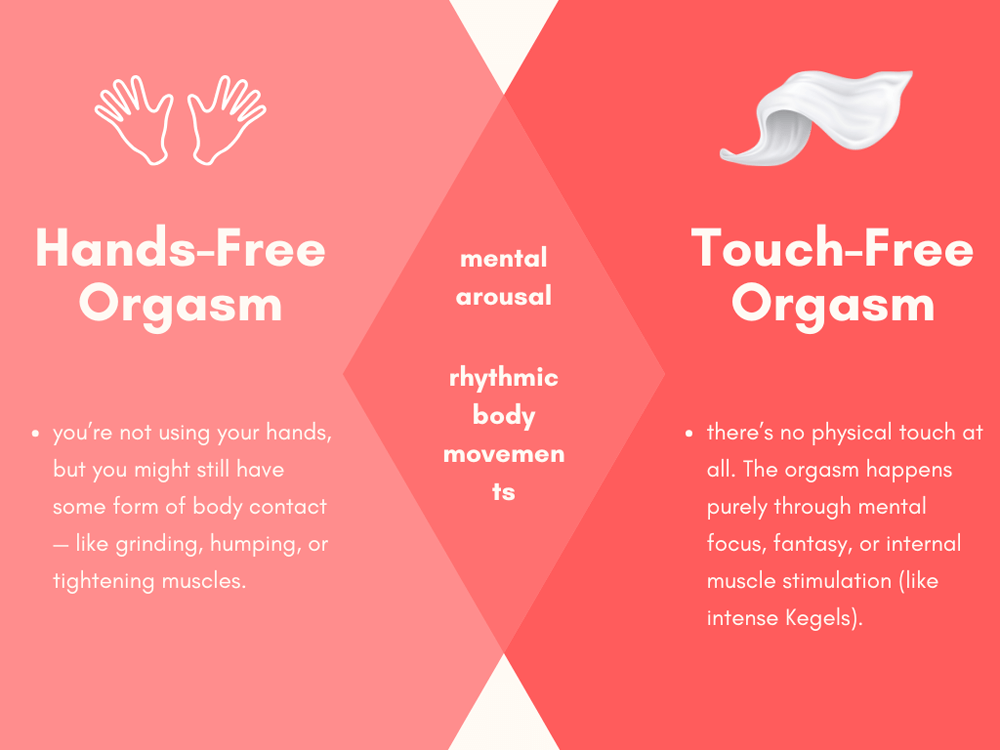
While research on hands-free orgasms is still limited, there’s some evidence supporting their existence. For instance, a study by Komisaruk et al. (2004) found that people can experience orgasmic sensations purely through imagery and brain activity, without genital stimulation. That shows the brain plays a powerful role in sexual pleasure.
In short, a hands-free orgasm isn’t just “imagination gone wild” — it’s a legit mind-body connection that blends arousal, focus, and body awareness in fascinating ways.
Safety Precautions
Before diving into any hands-free orgasm practice, it’s good to remember that pleasure should never come at the cost of your safety or comfort. Even though most of the methods we’ll mention don’t involve penetration or direct stimulation, your body still reacts physically — so a few precautions can help keep things healthy and enjoyable:
Don’t push yourself too hard.
Some techniques, like intense Kegel or core exercises, can strain your pelvic muscles if you overdo them. Start slow, breathe normally, and stop if you feel pain or fatigue.
Avoid risky habits like holding in urine.
Practices such as the “peegasm” might sound interesting, but regularly holding pee can lead to bladder infections or weaken your pelvic floor over time. (Researchers from the Cleveland Clinic note that frequent urine retention can cause urinary tract infections and even bladder damage.)
Stay mindful of your emotional state.
Hands-free orgasm methods often rely on focus and relaxation. If you’re stressed or anxious, forcing the experience can make it harder or frustrating — and that’s not the goal.
Clean surroundings and privacy matter.
Especially if you’re trying techniques that involve body movement or grinding (like humping), make sure you’re in a private, safe, and hygienic space to avoid distractions or discomfort.
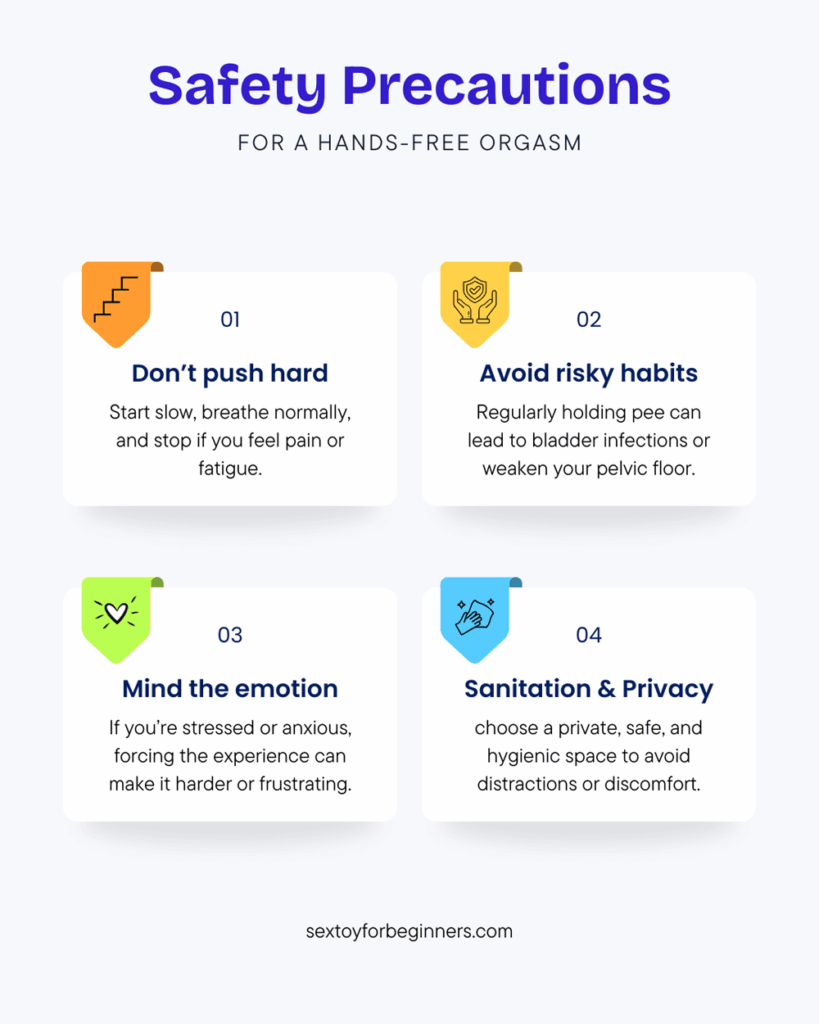
In short, treat this as an exploration, not a competition. Everyone’s body is different — if something doesn’t feel right, take a break, relax, and come back to it another time.
Methods of Hands-Free Orgasm
Hands-free orgasms can happen in different ways, depending on how your body and mind respond to arousal. Some people experience them naturally (like in dreams), while others train their muscles and focus to trigger that release while awake. Below are some of the most common and realistic ways it can happen.
Wet Dream
A wet dream — also called a nocturnal emission — is probably the most common example of a hands-free orgasm. It happens when a person ejaculates or reaches climax during sleep, often due to erotic dreams or a build-up of sexual tension.
According to research by Masters and Johnson (1966), nocturnal emissions are a normal part of sexual health for both men and women, though they occur more often in males during adolescence and early adulthood. Another study from the Journal of Sex Research found that about 8% of adult men still experience wet dreams occasionally, even after their teenage years.
Wet dreams are essentially your body’s natural release mechanism — no touching, no effort, just your subconscious doing its thing. They can happen after periods of abstinence or when you’ve been thinking about sexual topics frequently.
You can’t exactly “force” a wet dream, but you can gently increase the chances by:
- Going to bed relaxed and comfortable.
- Allowing yourself to daydream or fantasize before sleep.
- Avoiding overexhaustion, since fatigue can interrupt REM sleep (where most erotic dreams occur).
Wet dreams are a clear reminder that orgasm doesn’t always need hands — sometimes, your brain takes care of it all on its own.
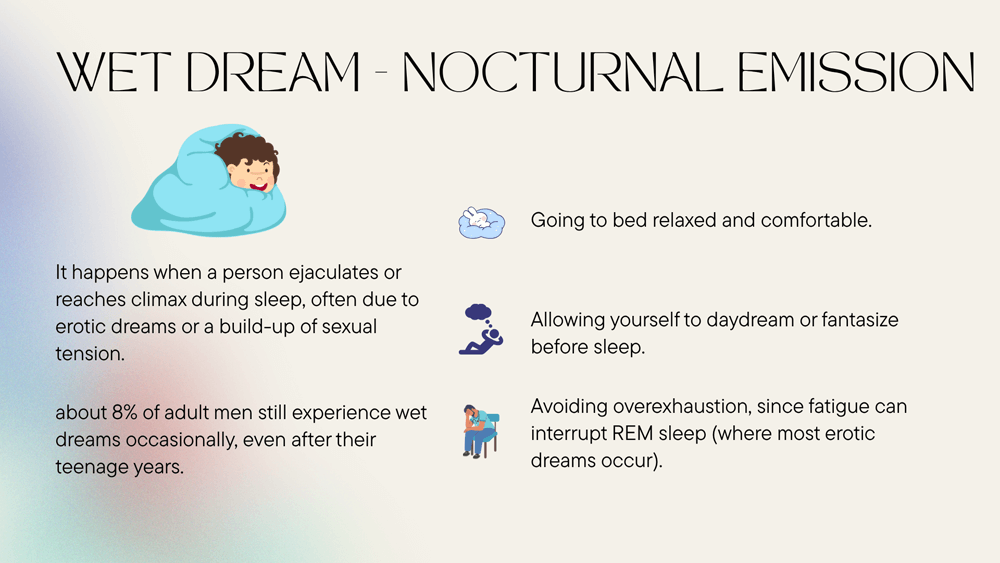
Coregasm
A coregasm is an orgasm triggered by core muscle engagement, especially during exercises like crunches, leg raises, planks, or even certain yoga poses. The term was coined from “core” + “orgasm,” and it’s surprisingly common — though not everyone talks about it openly.
Researchers from Indiana University’s Kinsey Institute (Herbenick & Fortenberry, 2011) found that about 10% of women and 8% of men have experienced exercise-induced orgasms at least once in their life. The sensation usually comes from the deep contractions of the pelvic floor and lower abdominal muscles, which can stimulate nerves linked to sexual pleasure — without any direct genital touch.
Here’s how it generally happens:
- When you engage your core muscles intensely, you tighten the same region involved in orgasmic contractions.
- The repeated squeeze and release build tension in the pelvic area.
- With enough rhythm, focus, and oxygen flow, that tension can release as a spontaneous orgasmic wave.
If you’re curious to explore this safely:
- Try slow, controlled core exercises like leg raises, bicycle crunches, or planks.
- Focus on your breathing and notice any warm or tingling sensations in your pelvic area.
- Stop if you feel dizzy, overly tense, or uncomfortable — the goal is pleasure through awareness, not strain.
Coregasms show how much the body and mind are connected — pleasure doesn’t always start between your legs; sometimes, it starts in your abs!
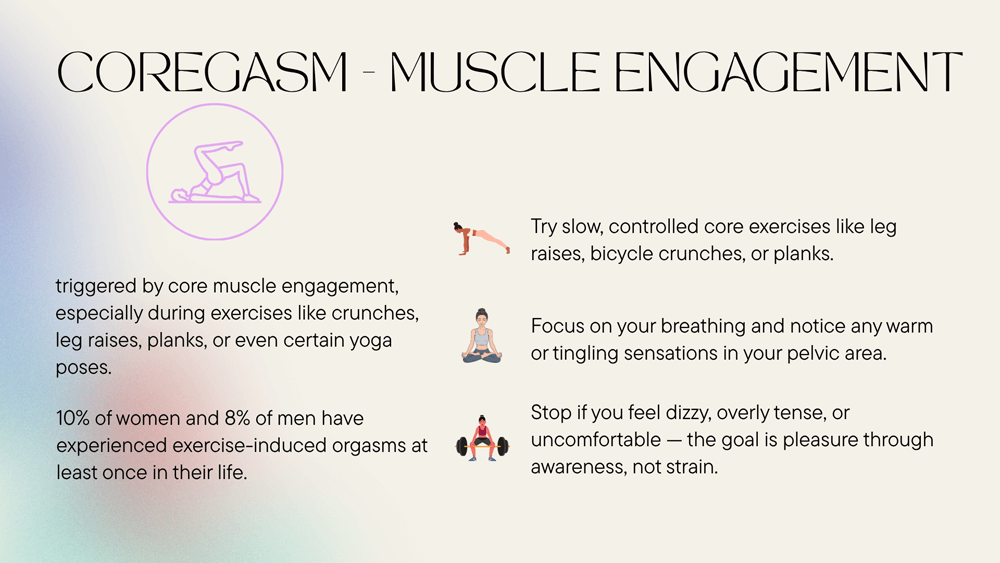
Peegasm
A peegasm refers to the orgasm-like sensation some people feel when they finally relieve themselves after holding in urine for too long. The term became popular on social media a few years ago, but the experience itself has been around much longer. Some describe it as a warm, tingling release that spreads through the pelvis or spine — sometimes even resembling an orgasmic wave.
So what’s actually happening here? When your bladder is full, it presses against pelvic nerves, including those connected to the genitals. Releasing that pressure suddenly can overstimulate those nerves, leading to a pleasurable shiver or spasm.
However — and this part is really important — you should NOT intentionally hold your pee just to chase this feeling.
According to the Cleveland Clinic (2022) and other urology experts, regularly delaying urination can cause urinary tract infections (UTIs), bladder stretching, and even long-term pelvic floor weakening. Your bladder is not designed to be a “pleasure toy.”
If you’re curious about body sensations linked to the bladder, focus instead on pelvic awareness exercises or Kegels, which stimulate similar nerve pathways without the health risks.
So yes, a “peegasm” can be real — but it’s one of those rare cases where your body says, “just because you can, doesn’t mean you should.”
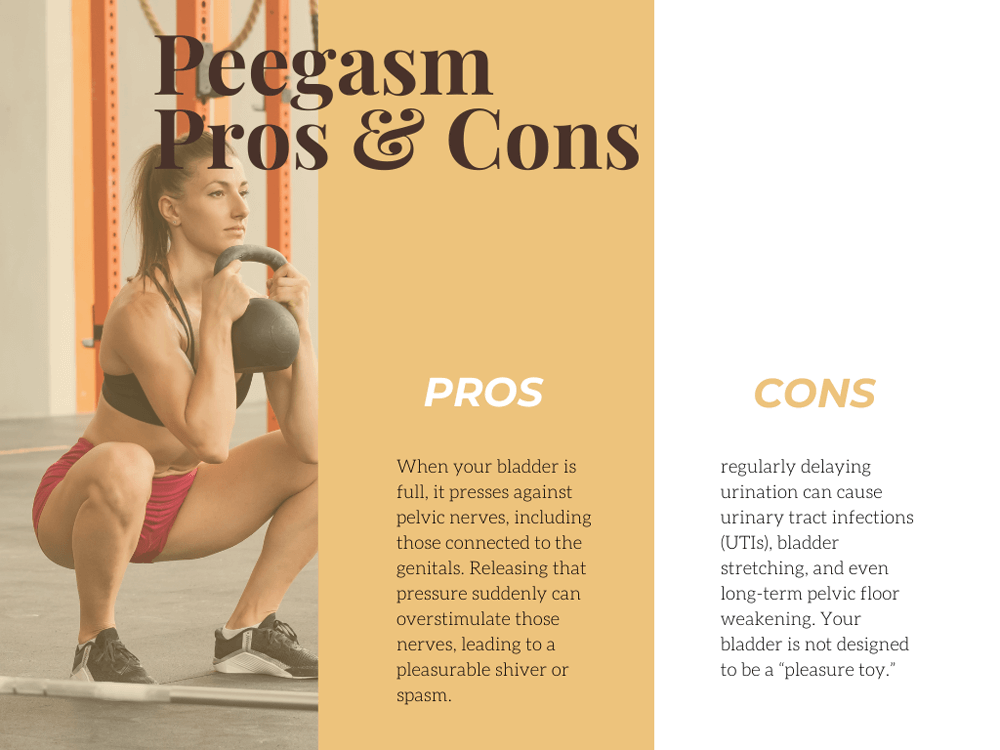
Kegel Exercises
Kegel exercises are one of the safest and most effective ways to explore hands-free pleasure — and they come with actual health benefits too. Originally designed to strengthen the pelvic floor muscles, Kegels can also increase arousal and help some people experience orgasm without any direct touch.
Your pelvic floor is a group of muscles that support your bladder, bowel, and (for people with vaginas) the uterus. These are also the same muscles that contract during orgasm. By learning to control and strengthen them, you can heighten awareness in that area and even trigger orgasmic sensations through muscle engagement alone.
Here’s a simple guide to get started:
- Identify your pelvic floor muscles. The easiest way is to stop your urine mid-flow — those are your Kegel muscles (though don’t make a habit of stopping pee too often).
- Squeeze and hold. Contract those muscles for about 3–5 seconds, then release. Repeat 10–15 times in a row.
- Stay relaxed elsewhere. Only your pelvic muscles should be working — don’t tighten your abs, thighs, or buttocks.
- Gradually increase intensity. Over time, aim for longer holds and stronger contractions.
Regular Kegel training can lead to better control during arousal and more intense orgasms. Some people even learn to reach a hands-free climax just by performing deep, rhythmic contractions while focusing on their breath and mental imagery.
And the best part? You can do them anywhere — sitting at your desk, lying in bed, or even while watching TV. No one will ever know.
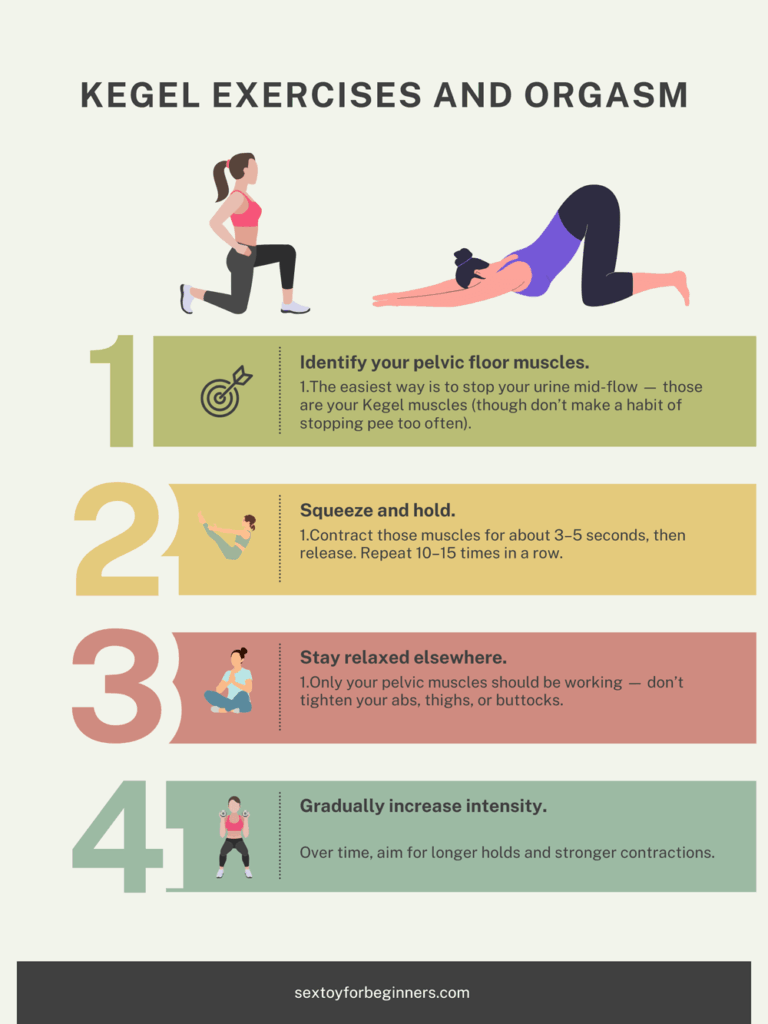
Humping
If the above hands-free techniques feel a little too subtle or advanced, humping (also known as grinding) is a much more approachable way to explore orgasm without using your hands. It’s technically not “touch-free,” but it’s still hands-free, since stimulation happens through body movement rather than manual contact.
Humping means using rhythmic motion and body pressure — like rubbing your pelvis or genitals against something soft — to create friction and arousal. Many people discover this naturally in their teens or while experimenting alone. It’s simple, direct, and doesn’t require any fancy setup.
If you want to try humping as a method for a hands-free orgasm:
- Choose a soft, clean surface such as a pillow, folded blanket, or plush toy.
- Find a rhythm that feels good — move slowly at first, then gradually increase speed or pressure as you get more aroused.
- Engage your core and breathing to build a more full-body sensation, not just local friction.
If you’re looking for something that feels more realistic than a pillow, you can also explore a toy designed for thrusting or grinding, like this one:
👉 Realistic Male Masturbater 3.7 lb Soft TPE Pocket Toy with Textured Tunnel
It offers a soft, body-like feel and a textured tunnel that enhances stimulation while still allowing a hands-free experience if you use it against a stable surface.
Humping may sound basic, but it’s one of the most natural and reliable ways to reach a hands-free orgasm — no special skills required, just comfort, rhythm, and a bit of imagination.
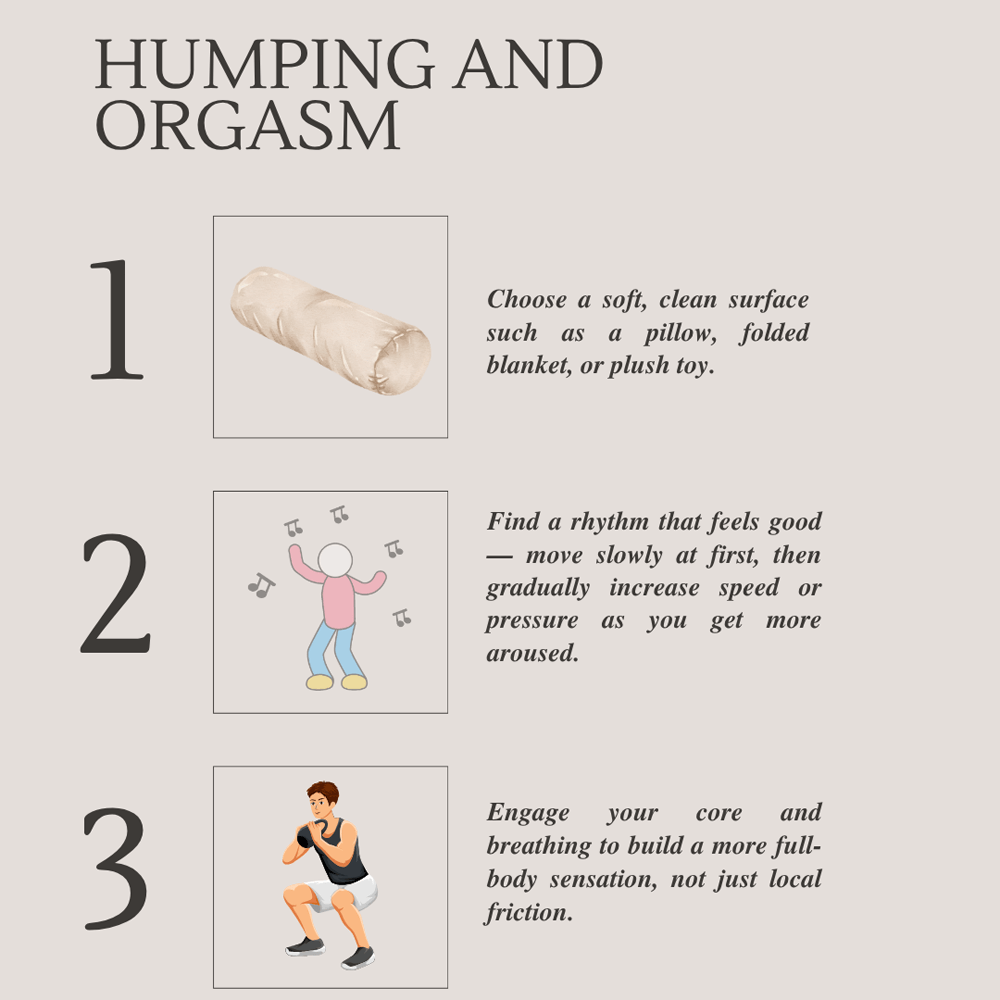
General Tips for a Hands-Free Orgasm
Even though some people experience hands-free orgasms naturally, for most of us it takes a bit of patience, body awareness, and mental focus. Think of it like learning to tune in to subtle sensations rather than chasing a quick climax. Here are a few helpful tips to make your practice smoother and more enjoyable:
Focus on the Breath
Breathing is everything when it comes to hands-free pleasure. Deep, slow breaths help your body relax and increase blood flow to your pelvic area — both of which are key for arousal.
Try breathing in through your nose for four seconds, holding for two, then exhaling slowly through your mouth. With every breath, imagine energy gathering in your pelvis. The more connected your breath and body are, the easier it becomes to build arousal from within.
Relax
Hands-free orgasms depend on letting go, not forcing it. Tension — whether it’s in your mind or body — can block the natural flow of pleasure.
Set up a calm environment: dim the lights, put on soothing music, and release any goal-oriented mindset. If nothing happens, that’s totally fine. The experience itself — the focus, the sensations, the exploration — is already valuable.
Choose a Good Stimulus
Even though you’re not using your hands, your brain still needs a source of arousal. That could be a fantasy, erotic audio, sensual music, or just the physical feeling of your body moving or contracting.
The goal is to find something that gets you mentally involved, because mental arousal often drives the physical response.
Use Fantasy
Your imagination is your most powerful erotic tool. Visualization — picturing scenarios, sensations, or people you find exciting — can activate the same brain regions involved in physical arousal.
You can experiment by building a story in your head or revisiting a memory that made you feel good. The more vivid and detailed the fantasy, the stronger the body’s natural reaction can become.
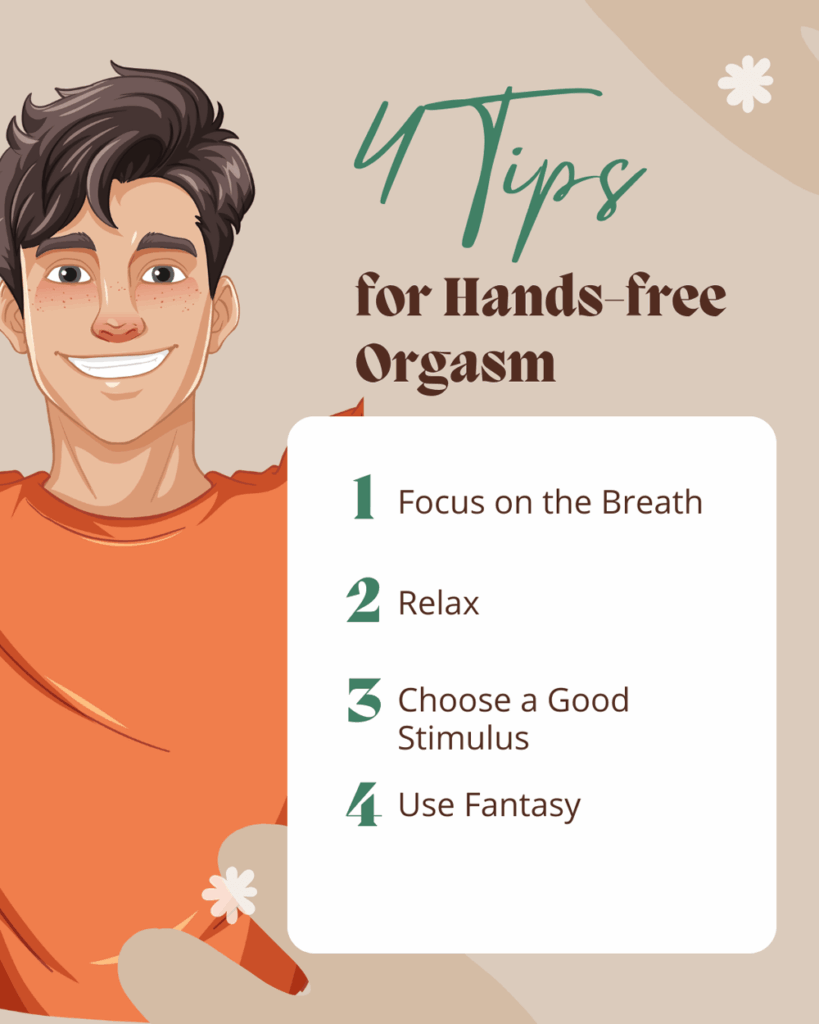
Remember: a hands-free orgasm is not about performance, but awareness. It’s about noticing the subtle build-up, the rhythm of your breath, and the connection between your mind and body. When those align, pleasure often follows naturally.
FAQs
Hands-free orgasms are fascinating, but they can also be a bit confusing when you first try them. Here are a few of the most common questions people have — along with some honest, simple answers.
Why are the above methods not working on me?
Everyone’s body reacts differently to arousal, and that’s totally normal. Hands-free orgasms rely a lot on mental focus, patience, and relaxation — not just physical stimulation. If nothing happens, it doesn’t mean you’re doing it wrong; it might just mean your body needs more time to learn what sensations to focus on.
Try shorter sessions, experiment with different breathing rhythms, or include light fantasy or gentle body movement. Think of it as “training your awareness,” not chasing a goal. Over time, sensitivity and control usually improve naturally.
Can I have a hands-free orgasm while not erecting?
Yes, it’s possible — though it’s less common. Orgasms and erections aren’t the same thing. An erection is a physical response, while orgasm is a neurological and muscular event.
Some people report non-erect orgasms during sleep, meditation, or deep Kegel practices. These are often described as softer, wave-like sensations rather than the explosive type linked to full erections.
Can I have a hands-free orgasm as a girl?
Absolutely! In fact, many women are more likely to experience hands-free orgasms through methods like coregasms, Kegels, or even deep mental arousal. The pelvic floor and clitoral network are highly sensitive to muscle contractions and mental stimulation — meaning orgasm doesn’t always need direct touch.
Research from the Kinsey Institute (Herbenick et al., 2011) also confirms that women are just as capable of experiencing exercise-induced or touch-free orgasms as men, given enough focus and body awareness.
To Wrap Up
Hands-free orgasms are a fascinating way to explore the mind-body connection in sexual pleasure. From natural wet dreams to intentional Kegel exercises or coregasms, there are many ways to experience orgasm without using your hands. Even methods like humping or using a soft toy can provide a hands-free yet satisfying experience.
The key is patience, awareness, and safety. Everyone’s body is different, so experiment gently, focus on your breath and sensations, and use your imagination to enhance arousal. Remember — this isn’t about performance or forcing results; it’s about learning to listen to your body and discovering new ways to experience pleasure.
With consistent practice and a relaxed mindset, hands-free orgasms are entirely achievable, and they can even add a fun, novel layer to your sexual wellness journey.
References
- Herbenick, D., & Fortenberry, J. D. (2011). Exercise-induced orgasm: prevalence, correlates, and sexual function implications. The Journal of Sexual Medicine, 8(4), 1151–1160. https://doi.org/10.1111/j.1743-6109.2011.02240.x
- Komisaruk, B. R., Whipple, B., Crawford, A., Grimes, S., Liu, W. C., Kalin, N., & Mosier, K. (2004). Brain activation during orgasm in women. The Journal of Neuroscience, 24(36), 9023–9030. https://doi.org/10.1523/JNEUROSCI.2581-04.2004
- Masters, W. H., & Johnson, V. E. (1966). Human sexual response. Boston: Little, Brown and Company.
- Cleveland Clinic. (2022). Holding urine: Is it safe or risky? Retrieved from https://my.clevelandclinic.org/health/diseases/21773-urinary-tract-infections


